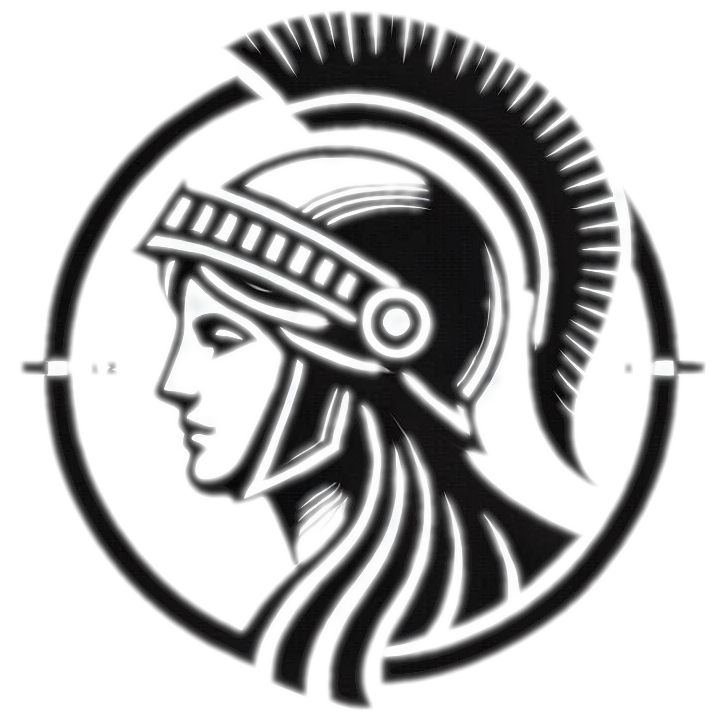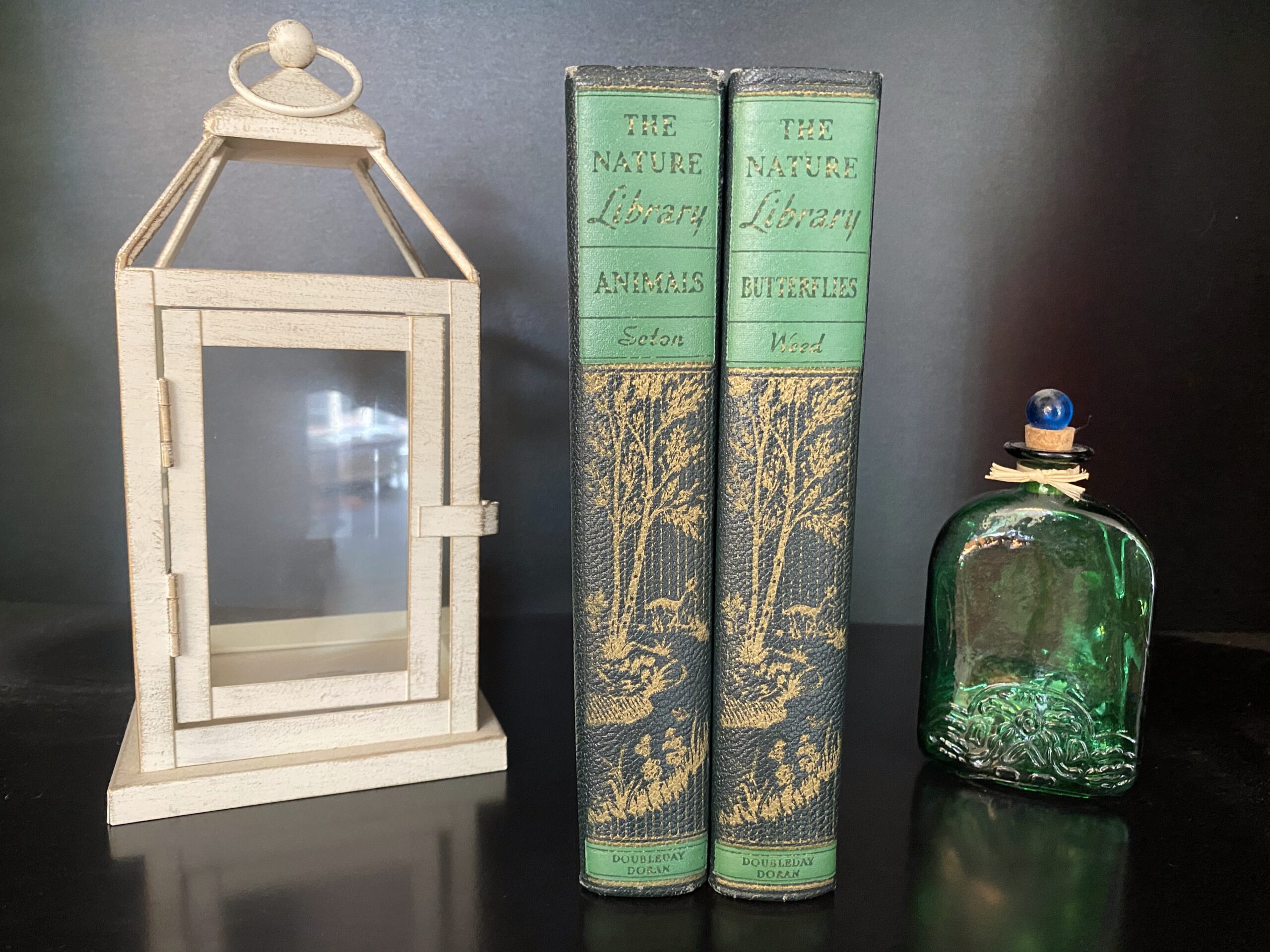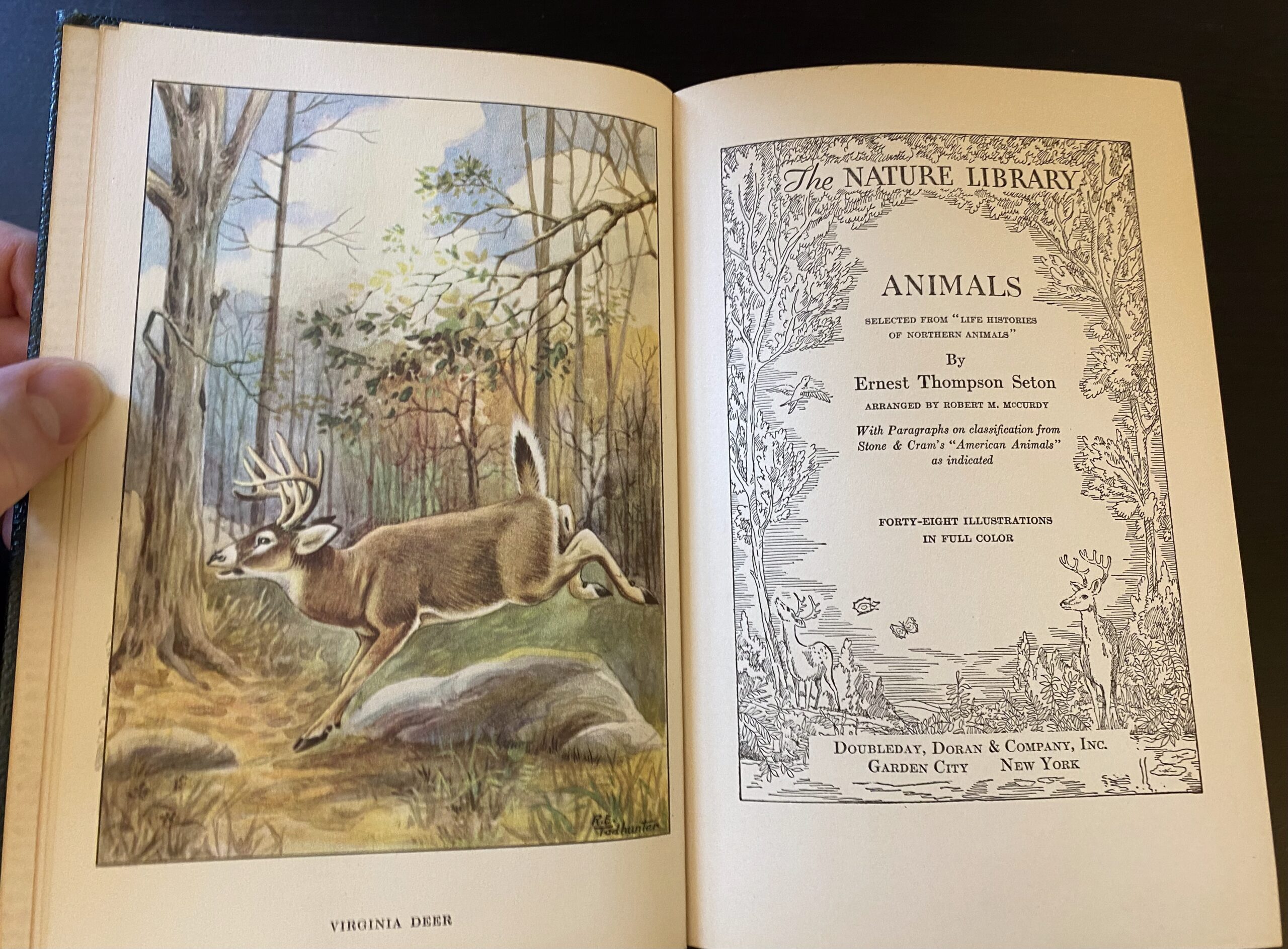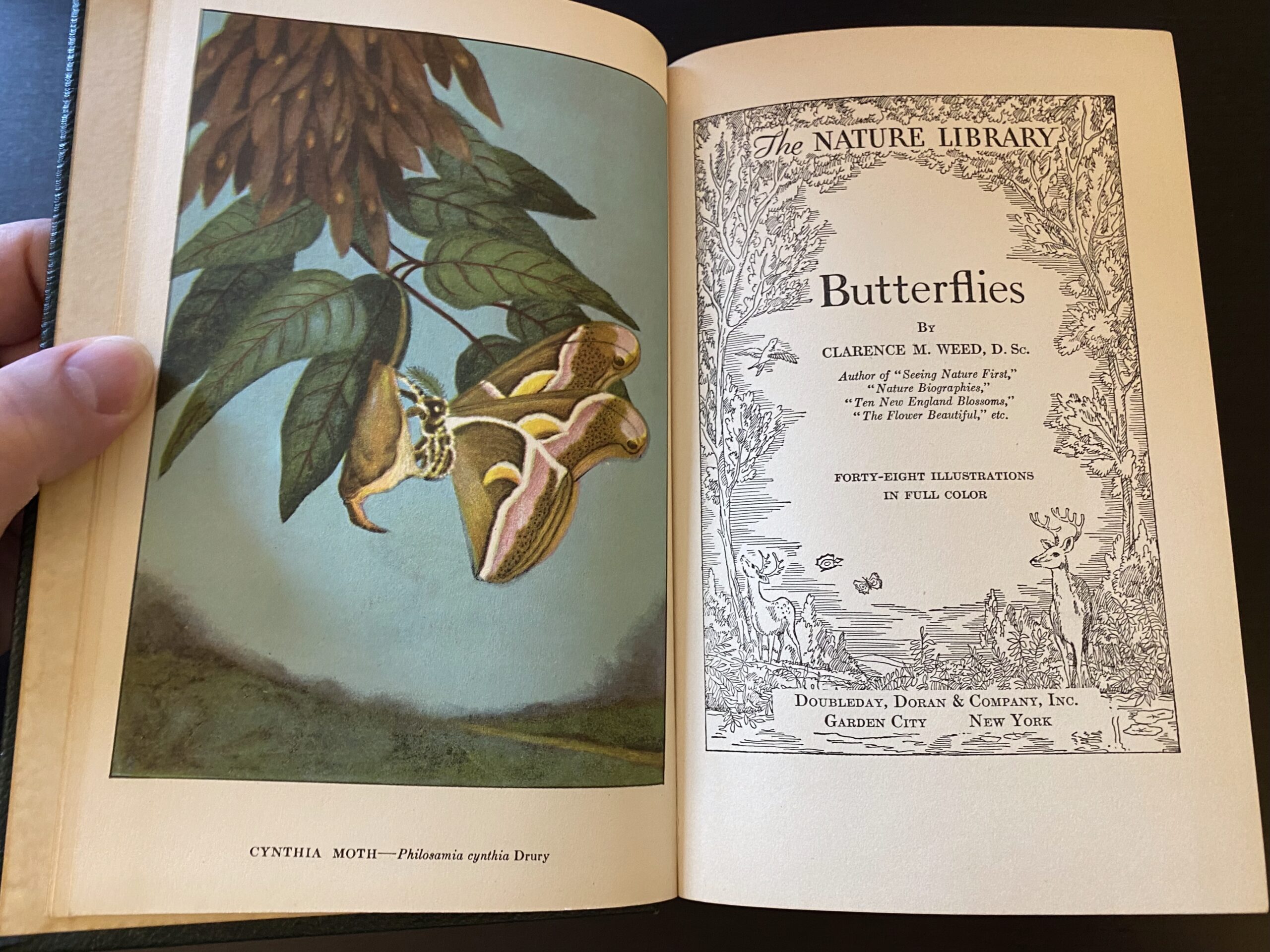- Title: Little Nature Library: Animals, Little Nature Library: Butterflies
- Author: Ernest Thompson Seton, Clarence M. Weed
- Publisher: Doubleday, Doran & Company, Inc
- Estimated year of printing: 1926
Notes:
The Little Nature Library is a series of nature books, first published in 1917 and then reprinted in several editions afterwards. The series spans animals, butterflies, wild flowers, trees, and garden flowers. The series is notable, in general, for its detailed descriptions of the subjects and the full-color illustrations that populate each book — not terribly common for the time period when these books were published. These two books, Animals and Butterflies, are from the 1926 edition. My collection also includes Birds and Wildflowers from the 1932 edition.
Ernest Thompson Seton (1860 – 1946) was a noted author and wildlife artist. He is best known as the founder of the Boy Scouts of America organization. He founded the Boy Scouts in 1910 and served the first (and only) “Chief Scout” 1910 through 1915. He was responsible for establishing many of the traditions of the Boy Scouts. He wrote a large number of nature books, and also the first edition of the Boy Scouts of America Official Handbook. The text of this book is mostly derived from his book Life-Histories of Northern Animals.
Clarence M. Weed (1864 – 1947) was a New England based naturalist, Weed began his career in 1888 at the Ohio Agricultural Experiment Station, where he was entomologist and professor. In 1891 he moved to the New Hampshire College of Agriculture and the Mechanic Arts, which went on to be come the University of New Hampshire. In 1904 he moved to the State Teachers College at Lowell, MA, which went onto to become the University of Massachusetts – Lowell, eventually serving as principal and president He was the author or coauthor of more than 20 books, many of them on insect pests and insect-plant relationships.



